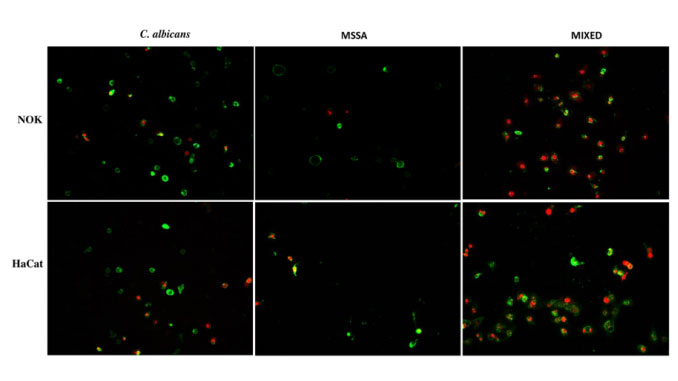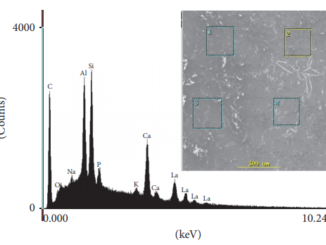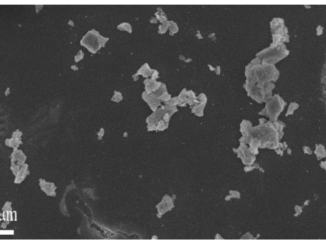
Soluble factors from biofilm of Candida albicans and Staphylococcus aureus promote cell death and inflammatory response
Background: The objective of this study was to better understand the effects of soluble factors from biofilm of single-and mixed-species Candida albicans (C. albicans) and methicillin-sensitive Staphylococcus aureus (MSSA) cultures after 36 h in culture on keratinocytes (NOK-si and HaCaT) and macrophages (J774A. 1). Soluble factors from biofilms of C. albicans and MSSA were collected and incubated with keratinocytes and macrophages, which were subsequently evaluated by cell viability assays (MTT). Lactate dehydrogenase (LDH) enzyme release was measured to assess cell membrane damage to keratinocytes. Cells were analysed by brightfield microscopy after 2 and 24 h of exposure to the soluble factors from biofilm. Cell death was detected by labelling apoptotic cells with annexin V and necrotic cells with propidium iodide (PI) and was visualized via fluorescence microscopy. Soluble factors from biofilm were incubated with J774A. 1 cells for 24 h; the subsequent production of NO and the cytokines IL-6 and TNF-alpha was measured by ELISA.
Results: The cell viability assays showed that the soluble factors of single-species C. albicans cultures were as toxic as the soluble factors from biofilm of mixed cultures, whereas the soluble factors of MSSA cultures were less toxic than those of C. albicans or mixed cultures. The soluble factors from biofilm of mixed cultures were the most toxic to the NOK-si and HaCaT cells, as confirmed by analyses of PI labelling and cell morphology. Soluble factors from biofilm of single-species MSSA and mixed-species cultures induced the production of IL-6, NO and TNF-alpha by J744A. 1 macrophages. The production of IL-6 and NO induced by the soluble factors from biofilm of mixed cultures was lower than that induced by the soluble factors from biofilm of single-species MSSA cultures, whereas the soluble factors from biofilm of C. albicans cultures induced only low levels of NO.
Conclusions: Soluble factors from 36-h-old biofilm of C. albicans and MSSA cultures promoted cell death and inflammatory responses.
Author (s): Dias, KD (Dias, Kassia de Carvalho); Barbugli, PA (Barbugli, Paula Aboud); de Patto, F (de Patto, Fernanda); Lordello, VB (Lordello, Virginia Barreto); Penteado, LD (Penteado, Leticia de Aquino); Medeiros, AI (Medeiros, Alexandra Ivo); Vergani, CE (Vergani, Carlos Eduardo)
BMC MICROBIOLOGY
Volume: 17 | Number of article: 146 | Published: JUN 30 2017
DOI: 10.1186/s12866-017-1031-5




